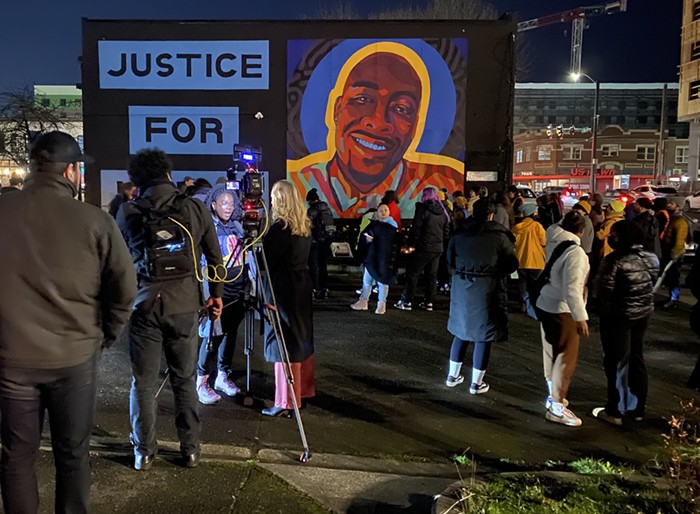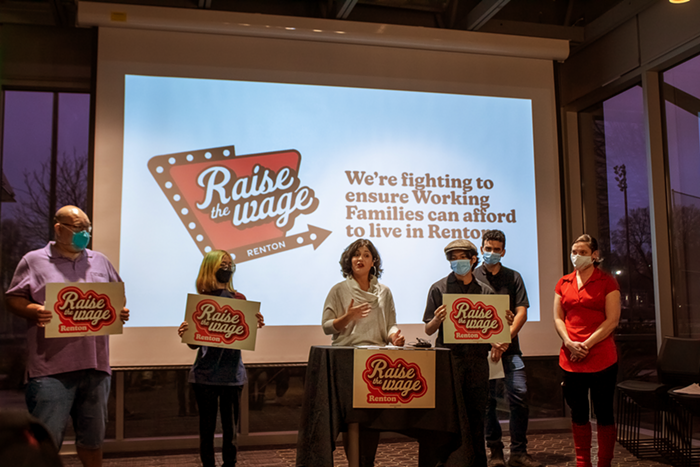On December 13, the Seattle City Council passed new rules for buildings in high-density residential neighborhoods. The decree has drawn predictable criticism from some activists, who complain the new rules will change the city's character, but in fact the gripes of these activists hit on exactly what's great about the new rules: They allow more housing.
And better housing, too.
Specifically, the new rules create sweeping incentives to build row houses. They're a style of housing that comes with raised stoops out front and an orientation directly to the sidewalk, and they're common in successful urban neighborhoods across the country (think of Victorian homes lined up on hills in San Francisco, brick homes in Baltimore, or New York City brownstones of the kind that Bill Cosby—er, Dr. Huxtable—lived in on The Cosby Show).
In her pivotal book on urban planning, The Death and Life of Great American Cities, Jane Jacobs's opening point is that the vitality of a neighborhood hinges on ample sidewalk activity—the kind row houses encourage. "Nobody enjoys sitting on a stoop or looking out a window at an empty street." To make the street lively, those buildings also "cannot turn their backs or blank sides on it and leave it blind."
Homes with their backs to the street are exactly the problem created by Seattle's last building boom, when town houses—as opposed to row houses—proliferated. The square proportions and gabled roofs of town houses allowed them, theoretically, to look like regular homes. But they aren't like regular homes. They come in sets of four-pack clusters huddled around a yawning driveway, are encircled by curtains of tall fencing, and snub the street. Worst of all, city rules practically required this impractical orientation by mandating each town house include a driveway, a garage, a fence, large setbacks from the edge of the property, and a little patch of corralled private lawn.
"The new rules don't necessarily prohibit four- or six-pack town houses," says city council member Sally Clark, who chaired the development committee that oversaw the new changes. "But now your incentive is to do something more creative that is a better fit for the neighborhood."
The new rules dictate that there is no limit to the number of row houses that can be placed on a lot, and no limit to the width of the overall structure. They can fill out the property to every edge (except the front, where they can come within five feet of the sidewalk), and this higher density lets developers build more on the same lot, potentially saving buyers money. (They'll also likely be made of wood, which makes them less expensive than a classic brownstone).
The new rules apply only to 8 percent of the city—the parts of the city zoned for so-called multifamily use. The 65 percent of the city that is zoned for single-family homes will remain unaffected. Yet some residents perceive the new rules as threatening greater density.
"For certain properties, developers could put in more units than they could before," argues Central District resident Bill Bradburd. Seattle Community Council Federation president Jeannie Hale wrote a letter to the council in late November asking them to slow down, because now where three town houses might be constructed, a developer could instead build six units.
Likewise, Hale is opposed to the city council's decision to scrap rules that required developers to include off-street parking in projects close to transit stops (such as light-rail stations and near buses that run at least every 15 minutes).
Clark dismisses both concerns. "We want to see the density go where we have better transit service," she says, adding that the council shouldn't always dictate where to build parking. (In fact, even without parking requirements, many developers build it anyway to qualify for financing loans.) "As for saying you're doing this too soon, I say to them that I hardly ever get knocked for doing things too fast," she says.
If anything, Clark did this too slow. She held her first public meeting on town houses in June of 2008. And since former mayor Greg Nickels gave Clark a draft of the bill that year, 418 town house apllications have been filed—under the old rules. ![]()


















